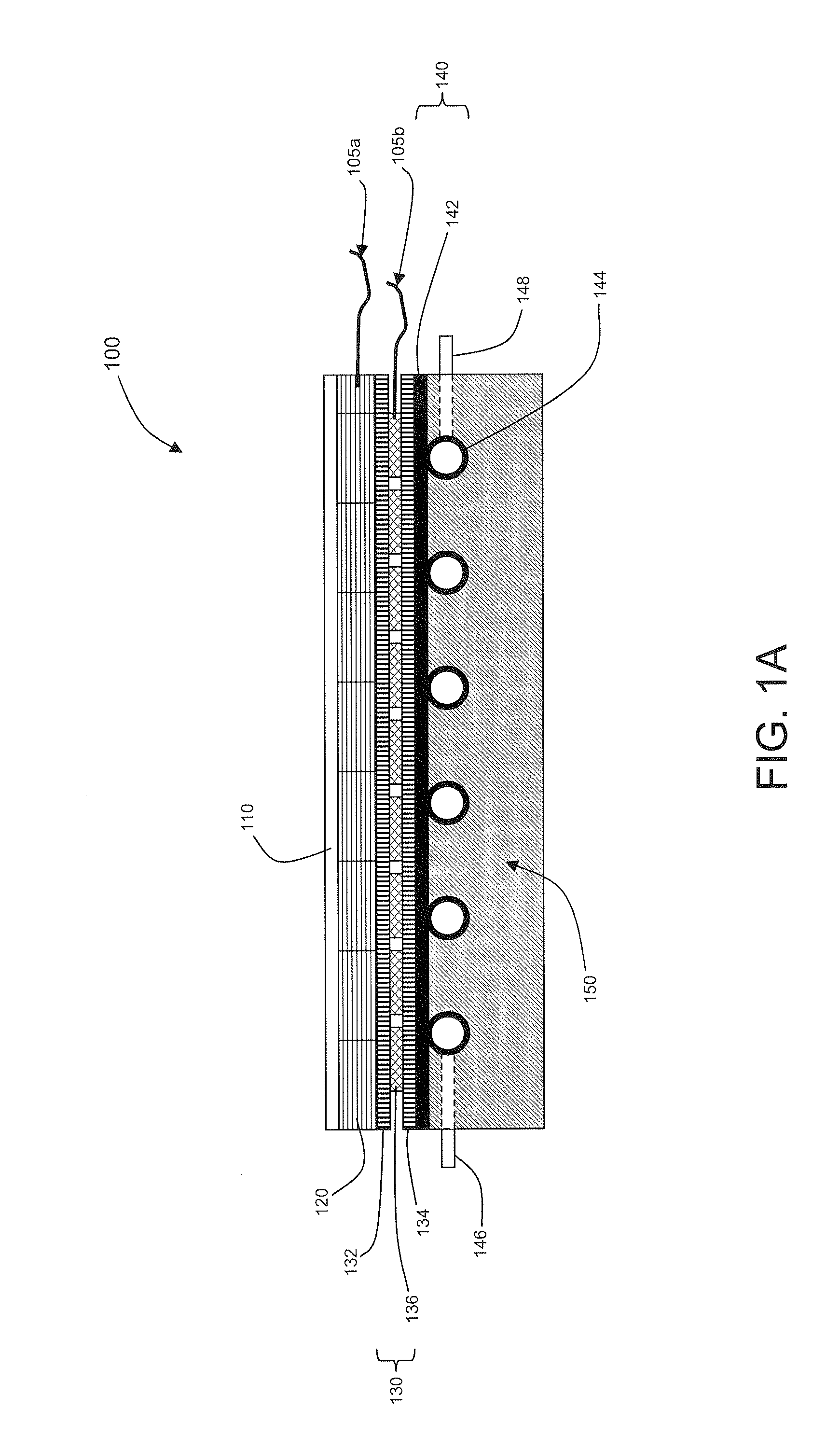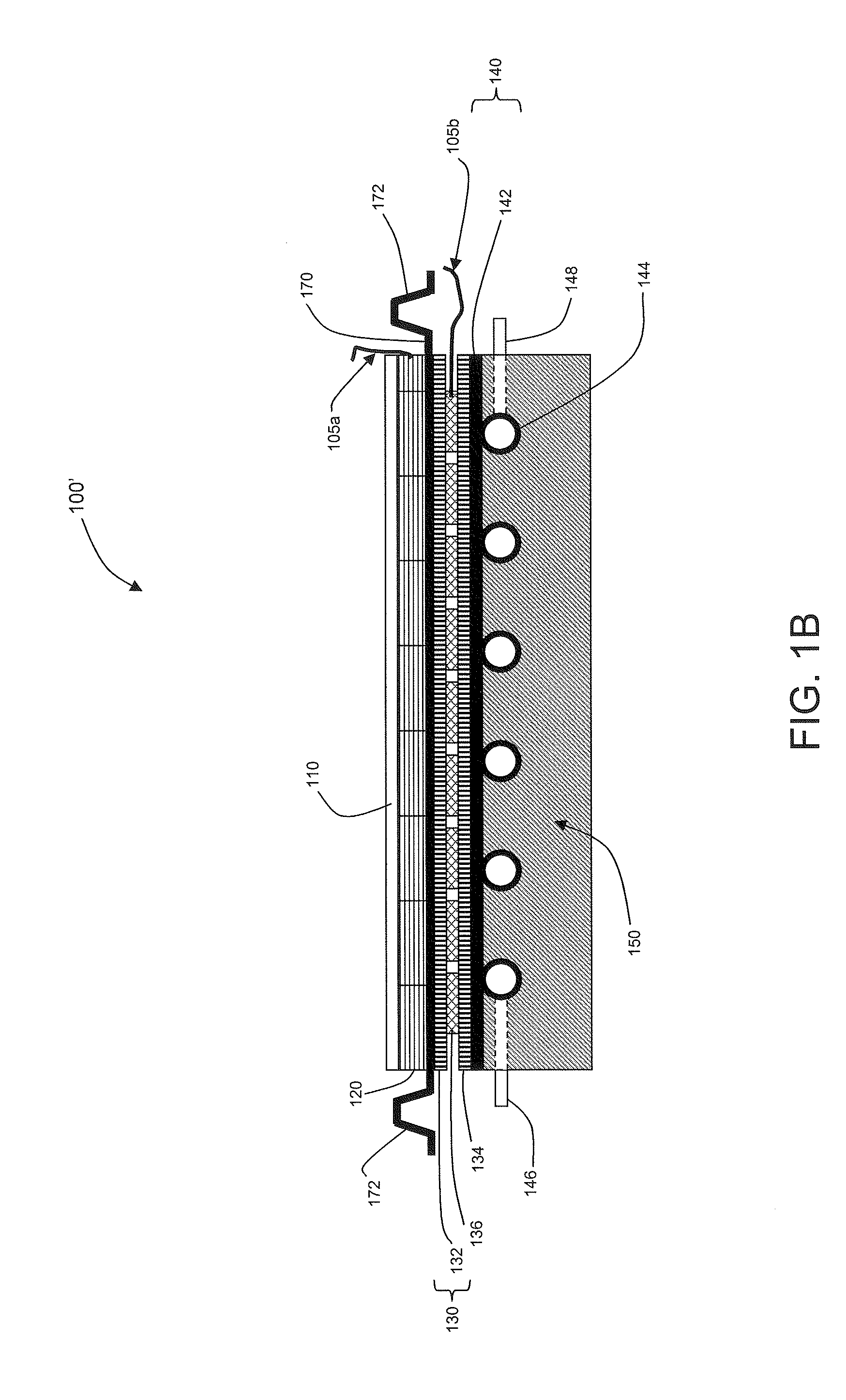Stacked Layer High Efficiency Solar Energy Collector
a solar energy collector and high-efficiency technology, applied in the field of solar energy collection, can solve the problems of system only capturing a fraction of solar energy, poor energy conversion efficiency, and relatively low efficiency, and achieve the effect of high-efficiency solar energy conversion module, and high-efficiency solar energy conversion
- Summary
- Abstract
- Description
- Claims
- Application Information
AI Technical Summary
Benefits of technology
Problems solved by technology
Method used
Image
Examples
Embodiment Construction
[0020]Reference will now be made in detail to embodiments of the present invention with reference to the accompanying figures, in which like reference numerals indicate like elements.
[0021]Embodiments of the present invention relate to methods and apparatus for capturing solar energy in relatively higher efficiency than known methods and providing a simpler packaging and installation design.
[0022]FIG. 1A is a diagram showing a cross-sectional view of an exemplary multi-stack solar energy collector panel 100. Multi-stack solar energy collector panel 100 can be part of an improved solar energy collection system (not shown) made according to an embodiment of the present invention. In one embodiment, multi-stack solar energy collector panel 100 can be used stand-alone to capture and process solar energy into electricity and a heated fluid, outputting a certain quantity of converted energy. In other embodiments, a plurality of exemplary multi-stack solar energy collector panels 100 can b...
PUM
 Login to View More
Login to View More Abstract
Description
Claims
Application Information
 Login to View More
Login to View More - R&D
- Intellectual Property
- Life Sciences
- Materials
- Tech Scout
- Unparalleled Data Quality
- Higher Quality Content
- 60% Fewer Hallucinations
Browse by: Latest US Patents, China's latest patents, Technical Efficacy Thesaurus, Application Domain, Technology Topic, Popular Technical Reports.
© 2025 PatSnap. All rights reserved.Legal|Privacy policy|Modern Slavery Act Transparency Statement|Sitemap|About US| Contact US: help@patsnap.com



